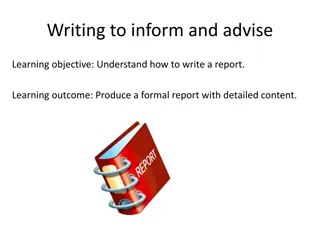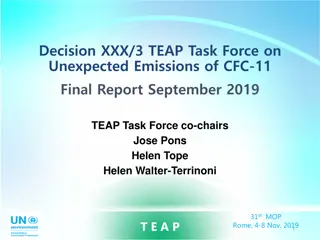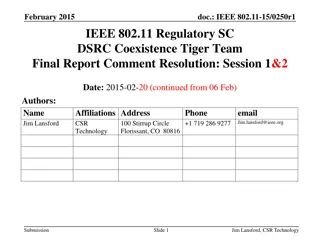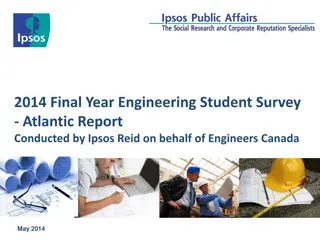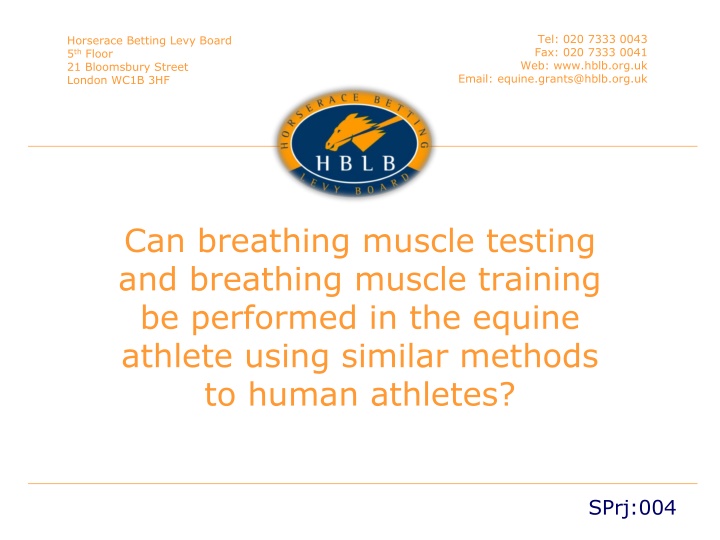
Improving Respiratory Performance in Equine Athletes
Explore the potential for breathing muscle testing and training in equine athletes to enhance their performance, similar to human athletes. Discover the impact of breathing muscle fatigue on racehorses and the possibility of training techniques to address upper airway muscle issues. Learn how breathing muscle training can benefit athletic performance in various sports disciplines.
Download Presentation

Please find below an Image/Link to download the presentation.
The content on the website is provided AS IS for your information and personal use only. It may not be sold, licensed, or shared on other websites without obtaining consent from the author. If you encounter any issues during the download, it is possible that the publisher has removed the file from their server.
You are allowed to download the files provided on this website for personal or commercial use, subject to the condition that they are used lawfully. All files are the property of their respective owners.
The content on the website is provided AS IS for your information and personal use only. It may not be sold, licensed, or shared on other websites without obtaining consent from the author.
E N D
Presentation Transcript
Tel: 020 7333 0043 Fax: 020 7333 0041 Web: www.hblb.org.uk Email: equine.grants@hblb.org.uk Horserace Betting Levy Board 5thFloor 21 Bloomsbury Street London WC1B 3HF Can breathing muscle testing and breathing muscle training be performed in the equine athlete using similar methods to human athletes? SPrj:004
Development of a novel technique for assessing and improving respiratory performance in racehorses Dr Kate Allen & Prof. Alison McConnell University of Bristol Bournemouth University
Background 1: Breathing muscles During intense exercise in human athletes, the huge demand placed on the breathing muscles, particularly the diaphragm, can result in breathing muscle fatigue Overloading the breathing muscles induces a reflex that reduces blood supply to the exercising leg muscles, which reduces delivery of oxygen, hastens limb fatigue and results in a decrease in exercise performance Fatigue of the diaphragm may also reduce airflow and increase in the perceived effort of exercise, which further reduces exercise performance The extent to which breathing muscle fatigue affects performance in racehorses is unknown. However, as the racehorse is already considered to be limited by breathing, it is highly likely that these mechanisms could play an important role in fatigue on the racetrack
Background 2: Upper airway muscles Upper airway (throat) obstructions can occur when the muscles of the upper airway are too weak or fatigued to keep the airway stable when exposed to the breathing demands during galloping Aryepiglottic fold collapse; laryngeal collapse; epiglottic retroversion; dorsal displacement of the soft palate Most wind surgeries attempt to provide a mechanical solution and at present there is no method of increasing the strength of the upper airway muscles
Background 3: Breathing muscle training Breathing muscle training improves athletic performance in humans in a wide range of sporting disciplines by preventing overload of breathing muscles Breathing muscle training is also a successful treatment for upper airway obstructions in human athletes
Reasons why the study was performed There was no method to measure breathing muscle performance in equine athletes, and no methods to specifically improve the performance of the upper airway or breathing muscles of equine athletes
Relevance to the Thoroughbred The prevalence of upper airway (throat) obstructions in racehorses is high and these conditions pose significant performance, health, welfare and economic concerns to the UK Thoroughbred industry Developing a method for specific breathing and upper airway muscle training may increase the performance of these muscles and hence prevent (or treat) upper airway collapse, and improve performance Developing a method for assessing breathing muscle strength would enable us to determine whether the breathing muscles fatigue during racing in horses, as they do in human athletes
Aims of this study The purpose of this project was to develop equipment and methods for breathing muscle testing and breathing muscle training in racehorses
Objectives The project had 4 objectives: To adapt [human] equipment for measuring breathing muscle performance for use in the horse To identify the most appropriate method to measure breathing muscle performance To assess the repeatability of this measure To develop a breathing muscle training device and assess the feasibility of its use in the horse
Summary of what was done We successfully manufactured and/or adapted equipment to assess breathing muscle strength, and then developed and tested protocols for its use We successfully manufactured and adapted equipment for breathing muscle training
Main results and conclusion Breathing muscle testing The images show the equipment in use. We developed and validated an incremental loading protocol that provides a repeatable index of breathing muscle strength
Main results and conclusions Breathing muscle training The images show the equipment we developed to enable us to undertake breathing muscle training in the horse. The equipment and technique is extremely well tolerated
Impact on the Thoroughbred This initial project will enable a new and exciting area of research to be undertaken, which has the potential to develop our understanding of the role of the breathing muscles in performance limitation in the Thoroughbred, and to provide revolutionary strategies to ameliorate the high prevalence of upper airway obstructions
Potential next steps This equipment development opens up an innovative area of research in the Thoroughbred racehorse and is already permitting further studies to take place to investigate the efficacy of breathing muscle training as a treatment for upper airway collapse Further research is planned to characterise the effects of conventional training programs upon breathing muscle function, and to identify the extent to which the performance of equine athletes can be improved by specific breathing muscle training








